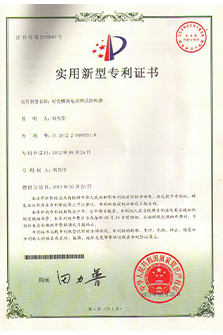 Afrikaans
Afrikaans  Albanian
Albanian  Amharic
Amharic  Arabic
Arabic  Armenian
Armenian  Azerbaijani
Azerbaijani  Basque
Basque  Belarusian
Belarusian  Bengali
Bengali  Bosnian
Bosnian  Bulgarian
Bulgarian  Catalan
Catalan  Cebuano
Cebuano  Corsican
Corsican  Croatian
Croatian  Czech
Czech  Danish
Danish  Dutch
Dutch  English
English  Esperanto
Esperanto  Estonian
Estonian  Finnish
Finnish  French
French  Frisian
Frisian  Galician
Galician  Georgian
Georgian  German
German  Greek
Greek  Gujarati
Gujarati  Haitian Creole
Haitian Creole  hausa
hausa  hawaiian
hawaiian  Hebrew
Hebrew  Hindi
Hindi  Miao
Miao  Hungarian
Hungarian  Icelandic
Icelandic  igbo
igbo  Indonesian
Indonesian  irish
irish  Italian
Italian  Japanese
Japanese  Javanese
Javanese  Kannada
Kannada  kazakh
kazakh  Khmer
Khmer  Rwandese
Rwandese  Korean
Korean  Kurdish
Kurdish  Kyrgyz
Kyrgyz  Lao
Lao  Latin
Latin  Latvian
Latvian  Lithuanian
Lithuanian  Luxembourgish
Luxembourgish  Macedonian
Macedonian  Malgashi
Malgashi  Malay
Malay  Malayalam
Malayalam  Maltese
Maltese  Maori
Maori  Marathi
Marathi  Mongolian
Mongolian  Myanmar
Myanmar  Nepali
Nepali  Norwegian
Norwegian  Norwegian
Norwegian  Occitan
Occitan  Pashto
Pashto  Persian
Persian  Polish
Polish  Portuguese
Portuguese  Punjabi
Punjabi  Romanian
Romanian  Russian
Russian  Samoan
Samoan  Scottish Gaelic
Scottish Gaelic  Serbian
Serbian  Sesotho
Sesotho  Shona
Shona  Sindhi
Sindhi  Sinhala
Sinhala  Slovak
Slovak  Slovenian
Slovenian  Somali
Somali  Spanish
Spanish  Sundanese
Sundanese  Swahili
Swahili  Swedish
Swedish  Tagalog
Tagalog  Tajik
Tajik  Tamil
Tamil  Tatar
Tatar  Telugu
Telugu  Thai
Thai  Turkish
Turkish  Turkmen
Turkmen  Ukrainian
Ukrainian  Urdu
Urdu  Uighur
Uighur  Uzbek
Uzbek  Vietnamese
Vietnamese  Welsh
Welsh  Bantu
Bantu  Yiddish
Yiddish  Yoruba
Yoruba  Zulu
Zulu Innovative Approaches to Designing Conveyor Belt Idlers for Enhanced Efficiency and Durability
Conveyor Belt Idler Design Enhancing Efficiency in Material Handling
Conveyor belt systems are indispensable in various industries, including mining, manufacturing, and logistics. These systems facilitate the movement of materials over long distances, improving productivity and operational efficiency. A crucial component of conveyor belt systems is the idler, which plays a significant role in supporting the belt and reducing friction. The design of conveyor belt idlers is essential for maximizing performance and ensuring the longevity of the entire conveyor system.
Understanding Idler Functions
Idlers are the rollers that support the conveyor belt and help maintain its alignment and mechanic efficiency. They are strategically placed along the conveyor system to provide underlying support as the belt conveys materials. By minimizing the contact points with the belt, idlers decrease friction and resistance, contributing to smoother operations. Additionally, they help in controlling the belt's sag and tension, which are critical for load handling and preventing operational disruptions.
Key Design Considerations
When designing conveyor belt idlers, several factors must be taken into account to achieve optimal functionality
1. Material Selection Idlers are typically made from materials such as steel, plastic, or rubber, chosen based on their strength, durability, and resistance to wear. Steel idlers are the most common due to their robustness, but lightweight alternatives may be suitable for specific applications.
2. Roller Diameter and Length The diameter and length of the idler rollers should be selected based on the type of materials being transported, the conveyor width, and the expected load. Larger diameters can support heavier loads and help distribute weight evenly, while longer rollers contribute to better belt tracking.
conveyor belt idler design

3. Idler Spacing Proper spacing between idlers ensures effective belt support and minimizes belt sagging. Spacing too far apart may lead to increased friction and belt wear; therefore, it is essential to adhere to industry standards and specifications when determining distances.
4. Bearing Design The choice of bearings is crucial for minimizing maintenance and ensuring the idler functions efficiently. Sealed bearings that are resistant to dust and moisture can greatly enhance the idler's lifespan, reducing downtime and maintenance costs.
5. Environmental Considerations Conveyor systems often operate in harsh environments, with exposure to dust, moisture, and extreme temperatures. The idler design should address these conditions, possibly incorporating features such as weather-resistant coatings or special seal designs to protect against contaminants.
Innovative Design Approaches
Recent advancements in technology have led to innovative redesigns of conveyor idlers. For instance, some designs now incorporate features aimed at noise reduction and vibration absorption, enhancing user comfort and minimizing disruptions in sensitive environments. Additionally, modular designs allow for easier replacement and upgrading of individual components, promoting sustainability and adaptability within the conveyor system.
Conclusion
In summary, the design of conveyor belt idlers is a critical aspect of efficient material handling operations. By focusing on key considerations such as materials, dimensions, spacing, and environmental factors, engineers can create idlers that not only support the belt effectively but also enhance the overall conveyor system's performance. With technological advancements paving the way for innovative designs, the future of conveyor belt idler systems looks promising, promising increased efficiency, reduced maintenance, and prolonged operational life. By investing in high-quality idler design, companies can significantly enhance their productivity and bottom line in an increasingly competitive landscape.
-
Revolutionizing Conveyor Reliability with Advanced Rubber Lagging PulleysNewsJul.22,2025
-
Powering Precision and Durability with Expert Manufacturers of Conveyor ComponentsNewsJul.22,2025
-
Optimizing Conveyor Systems with Advanced Conveyor AccessoriesNewsJul.22,2025
-
Maximize Conveyor Efficiency with Quality Conveyor Idler PulleysNewsJul.22,2025
-
Future-Proof Your Conveyor System with High-Performance Polyurethane RollerNewsJul.22,2025
-
Driving Efficiency Forward with Quality Idlers and RollersNewsJul.22,2025





























